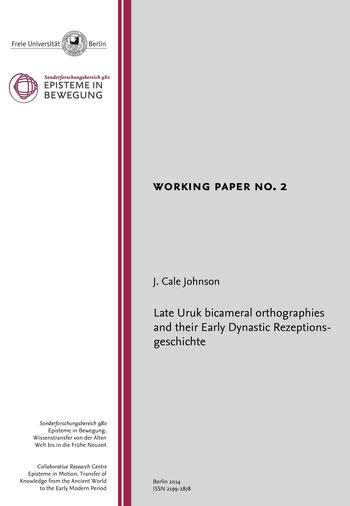Working Paper No. 2/2014 | Late Uruk bicameral orthographies and their Early Dynastic Rezeptionsgeschichte
J. Cale Johnson – 2014
This paper investigates the administrative terminology and schemata that were used to manage large brick-and-mortar institutions in the first millennium of the cuneiform textual record (ca. 3300–2000 BCE). One of the most important techniques for the calibration of institutional hierarchies in this period was the distribution of high quality foodstuffs such as meat, fish and beer in the context of so-called diacritical feasting. Ethnographers and anthropologists have emphasized the importance of feasting as a vehicle for both building solidarity among elites, while at the same time carefully differentiating the rank and status of particular roles within the upper echelon of society. This paper identifies the earliest evidence for butchery and meat distribution practices in the proto-cuneiform textual record (ca. 3300–3000 BCE) and links these practices to the major lexical lists concerned with professional titles, the organization of institutional structures and the elite foodstuffs that were used to validate an individual’s position within these hierarchies (the lists known as Archaic Lu A [NAMESHDA], Archaic Officials [UKKIN] and Archaic Food). The links between these lexical lists and administrative documents also demonstrate that the offices named in the Archaic Officials list corresponded to the personnel of an actual institution in the Late Uruk period.
